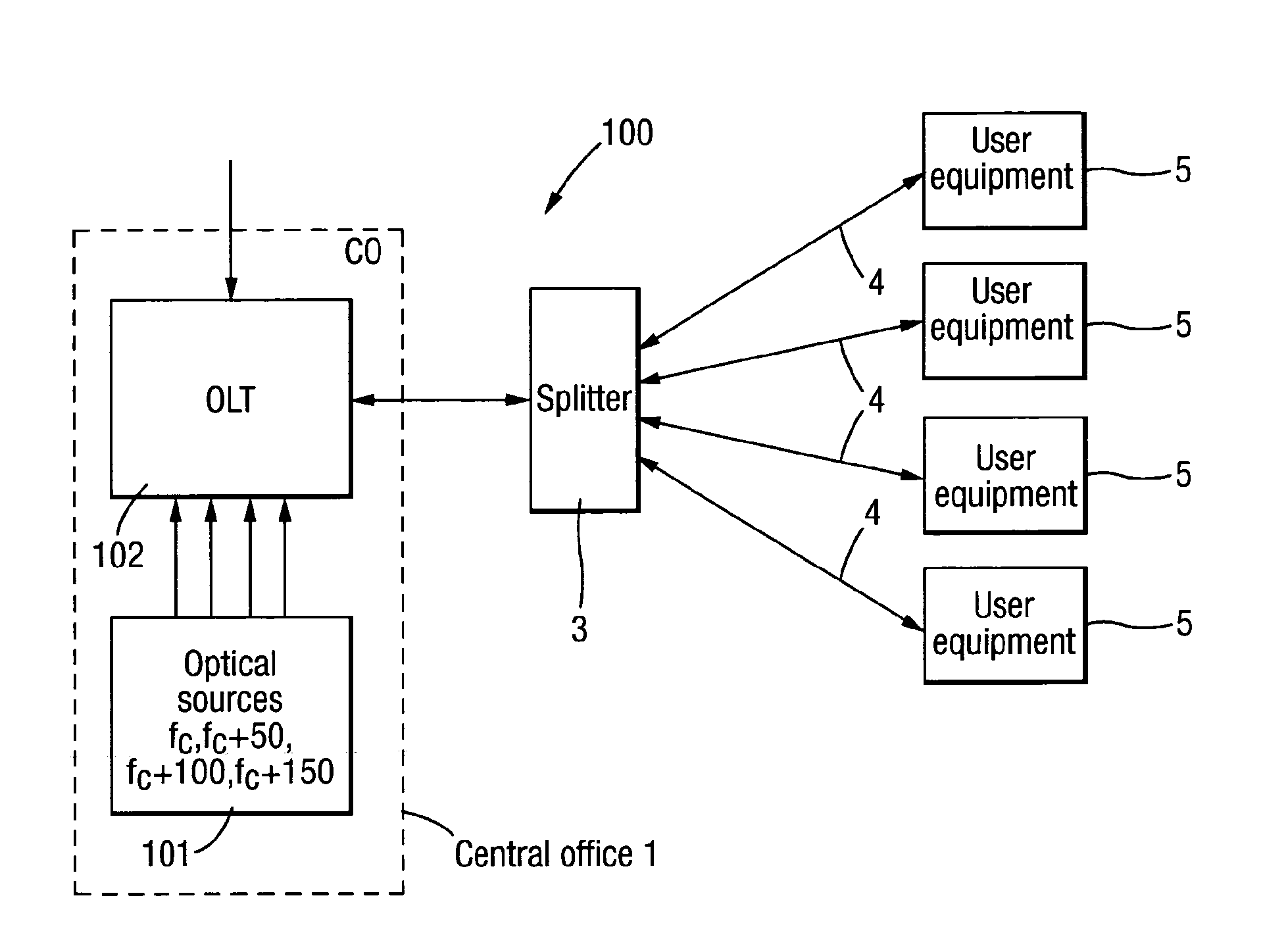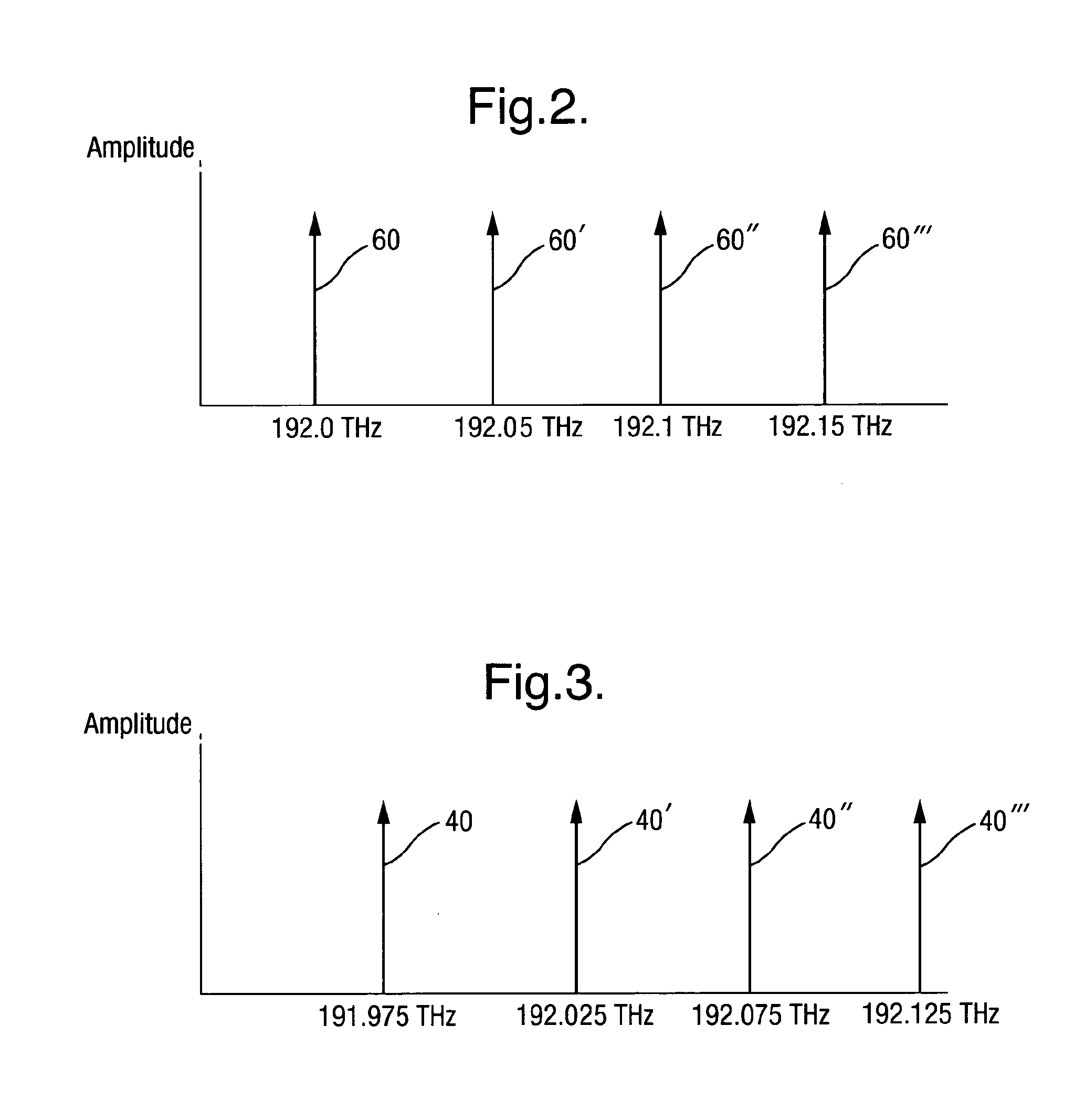Optical Apparatus
a technology of optical equipment and optical tubes, applied in the direction of electrical equipment, multi-station single light source, fibre transmission, etc., can solve the problem of high production cos
- Summary
- Abstract
- Description
- Claims
- Application Information
AI Technical Summary
Benefits of technology
Problems solved by technology
Method used
Image
Examples
Embodiment Construction
[0040]In FIG. 1, a four user optical communication access network which operates in accordance with the 50 GHz ITU-grid standard is shown. Embodiment of the invention may, of course, have application to other kinds of optical network or in accordance with other standards that define operating wavelength, but it is envisaged that in at least this arrangement it may have application to a 50 GHz network.
[0041]The network 100 comprises a central office (CO) and an optical line terminal (OLT) 102. The OLT 102 is connected through a single optical fibre 2 to a passive splitter 3. The splitter 3 connects the fibre 2 to a set of fibres 4 (here, four fibre, although more could be provided). Each of the fibres 4 is connected to a respective optical apparatus 5. Each apparatus 5 is associated with a respective user. Typically the optical apparatus will be located at the users premises or close to their premises. In the case of ITU-grid networks each optical apparatus may form part or all of an...
PUM
 Login to View More
Login to View More Abstract
Description
Claims
Application Information
 Login to View More
Login to View More - R&D
- Intellectual Property
- Life Sciences
- Materials
- Tech Scout
- Unparalleled Data Quality
- Higher Quality Content
- 60% Fewer Hallucinations
Browse by: Latest US Patents, China's latest patents, Technical Efficacy Thesaurus, Application Domain, Technology Topic, Popular Technical Reports.
© 2025 PatSnap. All rights reserved.Legal|Privacy policy|Modern Slavery Act Transparency Statement|Sitemap|About US| Contact US: help@patsnap.com



